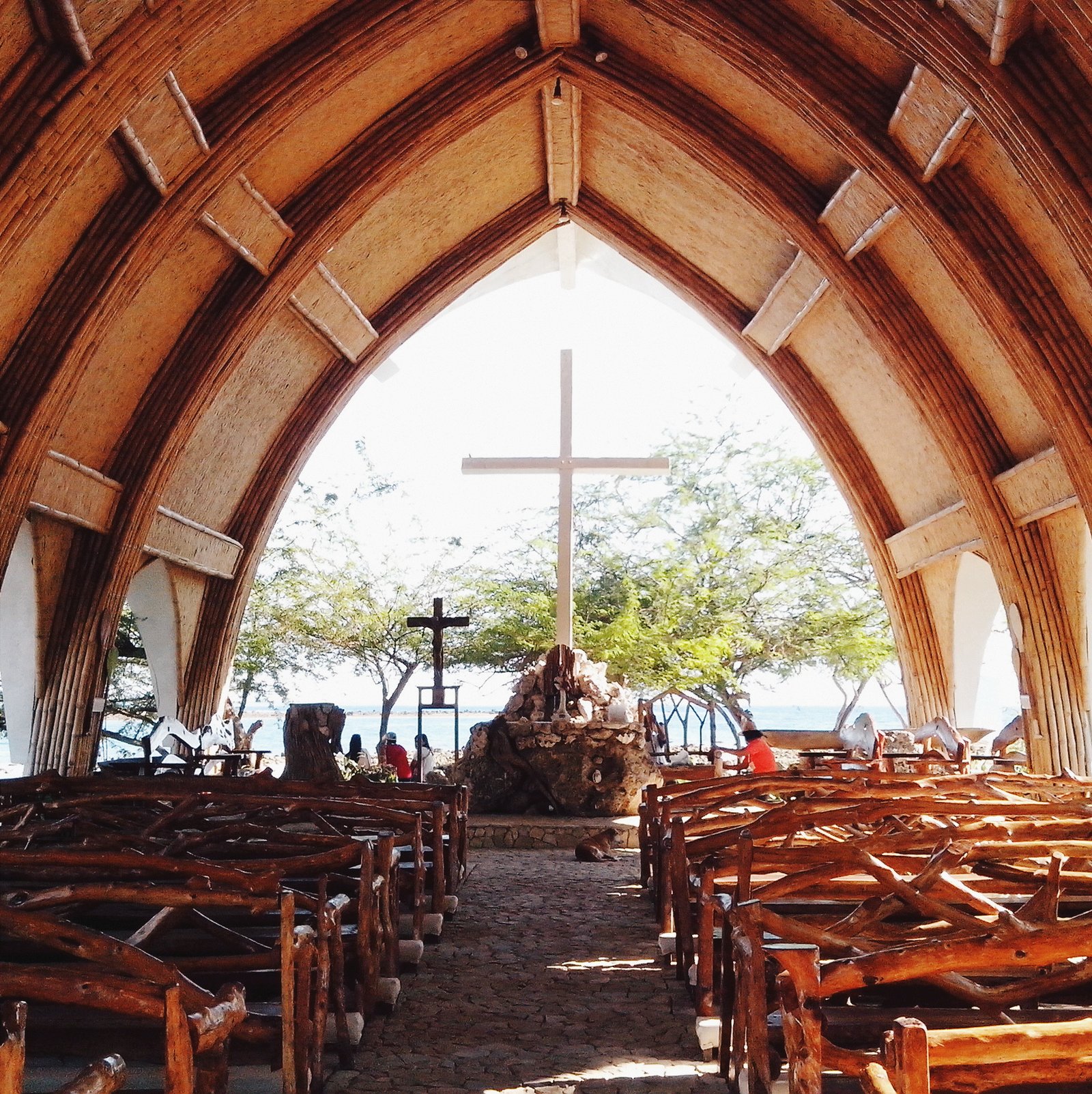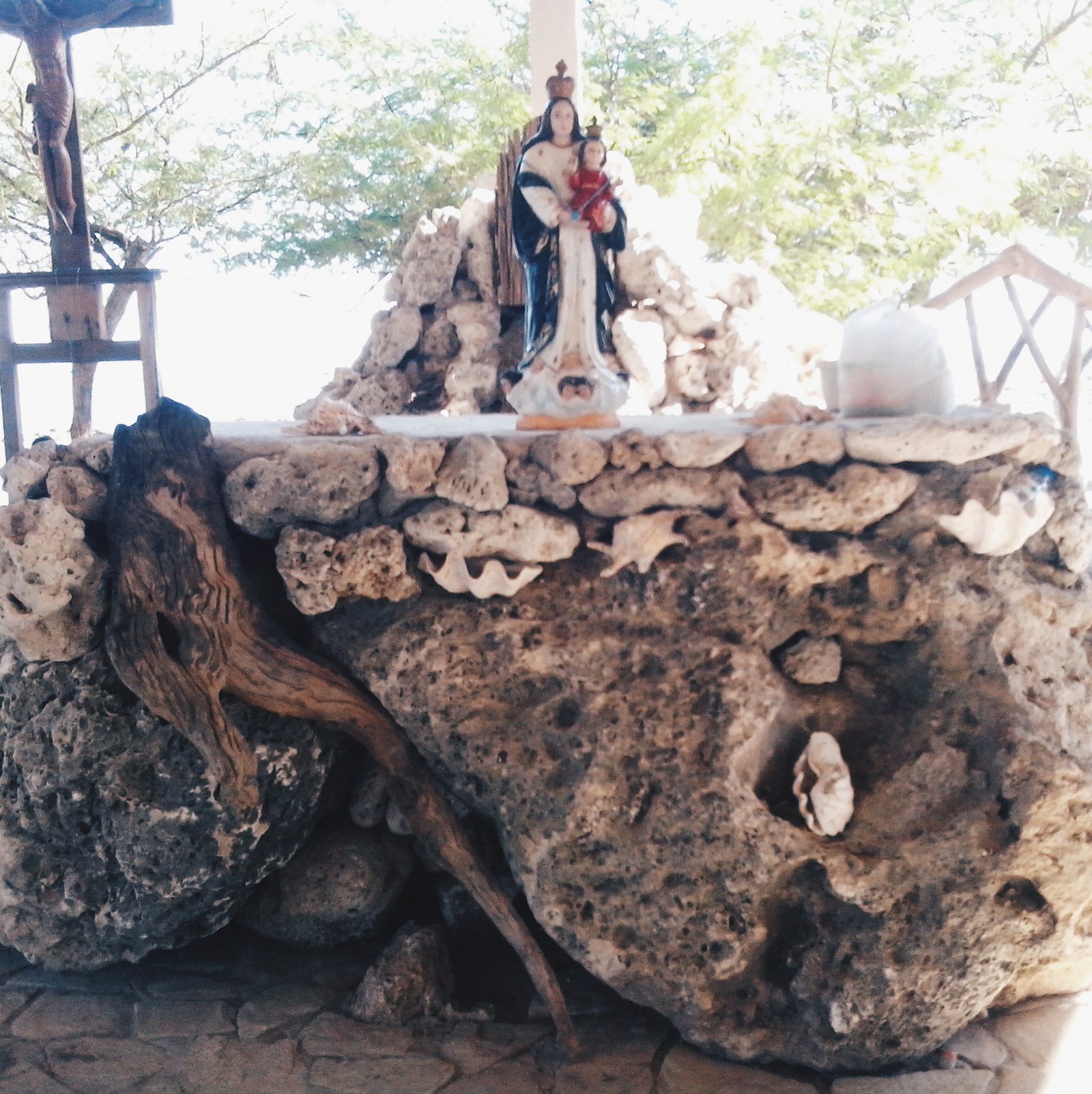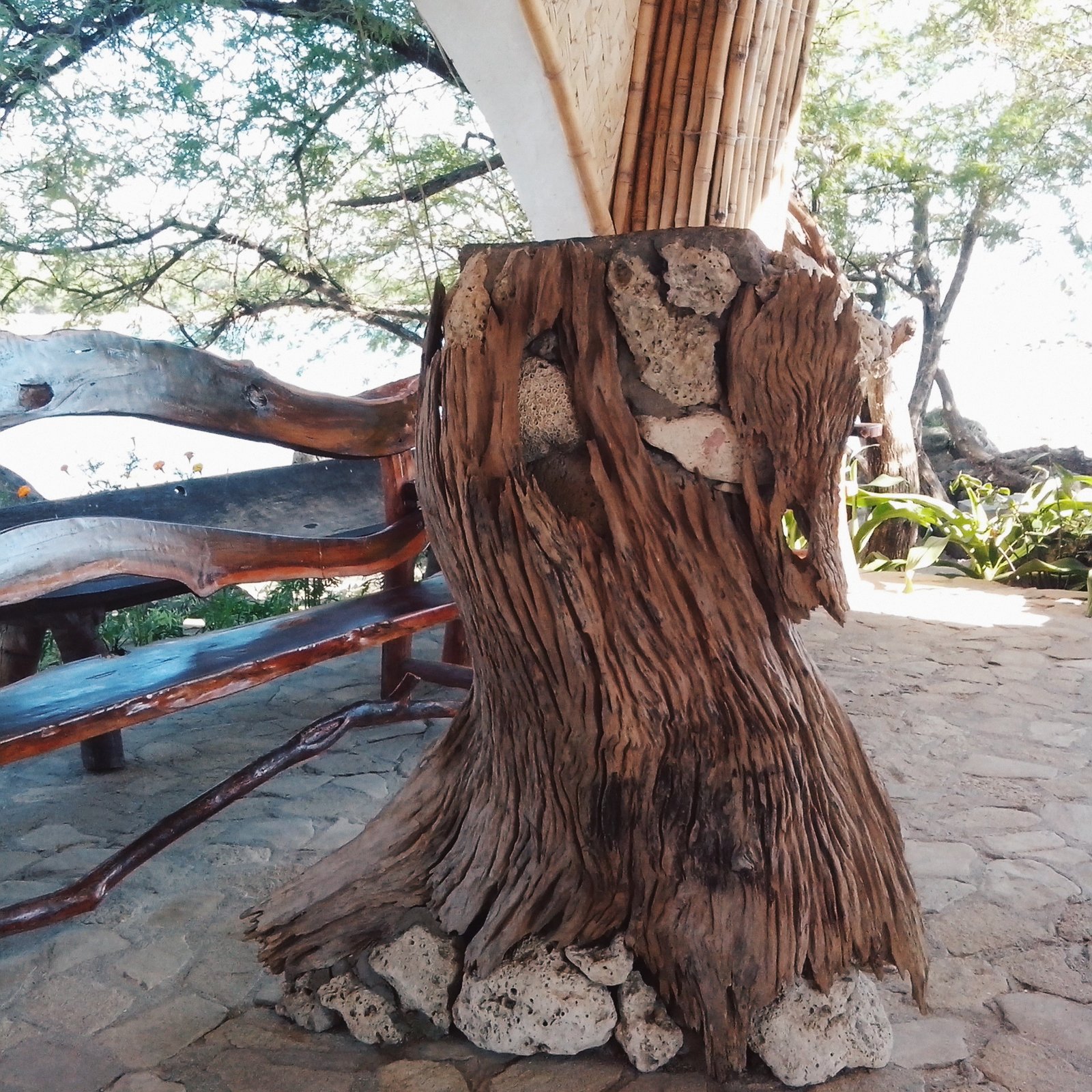La Virgen Milagrosa
The La Virgen Milagrosa Badoc houses the Sanctuary of the Miraculous Statue of the Blessed Virgin Mary, the La Virgen Milagrosa. History traces the life-sized statue to Nagasaki, Japan. It was sent floating in the sea by missionaries operating in secret in Japan (for fear of persecution during the Tokugawa Regime), along with the Miraculous Statue of the Black Nazarene (Sinait’s Santo Cristo Milagroso). It was first found by local fishermen in the shores of Barangay Dadalaquiten, on the boundary between Sinait and Badoc, in the year 1620. Only fishermen from Sinait were able to move the Statue of the Black Nazarene. The fishermen from Badoc, unable to move the Black Nazarene, were able to move the La Virgen Milagrosa that came with it–which was, in turn, unable to be moved by the fishermen from Sinait. They took the statues to their respective towns, hence becoming their patron saints. Today The La Virgen Milagrosa is enshrined at the Badoc Church. Brief History Badoc is bounded on the south by the Province of Ilocos Sur; on the north by the town of Pinili; on the west by the Luzon Sea; and on the east by the Municipality of Nueva Era. The town got its name from badok-badok (phleum-pratense), a plant which abounds in the locality, It has land are of 66.41 square kilometers, with a population of 26,737 in 1995. The town’s first settlers were people belonging to a tribe known officially as Tingguian but whom the Ilocanos commonly called Itneg. The Spaniards first explored the area in 1572 when Juan de Salcedo made an expedition to the north. He came back in 1574 to formally organize the government of Ilocos. He made Badoc an encomienda of Juan de la Pena. Badoc became an independent parish in 1714. The zealous Augustinians taught the natives advanced agriculture like the cultivation of sugar cane, cotton, corn, rice and indigo. The cultivation of indigo became a lucrative business not only in Badoc but also to the rest of the Ilocos in the late 18th and the first half of the 19th century. During the Philippine Revolution of 1898, Badoc was occupied by the revolutionary forces of General Manuel Tinio. When the war shifted against the Americans, the town and the surrounding areas of Batac and Paoay became the fields of operation of the guerillas of Gregorio Aglipay. When Gregorio Aglipay established the Philippine Independent Church, Badoc became one of the centers of the newly established religious sect. But while Aglipayanism had taken a great stride in Badoc, the town, however, remained a great mecca of Catholicism in the north. Today, the church of Badoc, an imposing structure of bricks and stones houses the Virgen Milagrosa de Badoc, the patroness of the province.
MIS 2020-03-16 05:13:01




